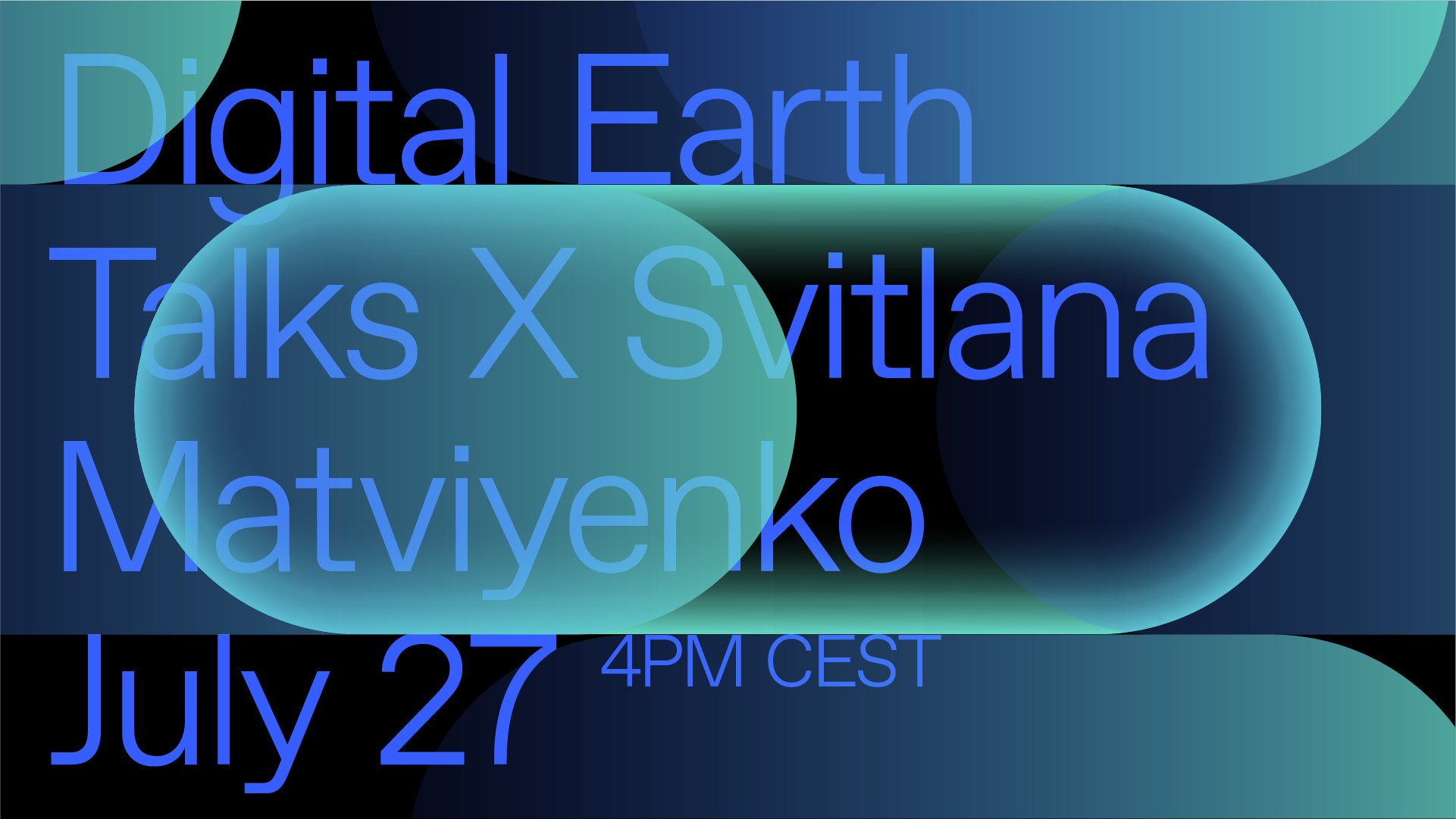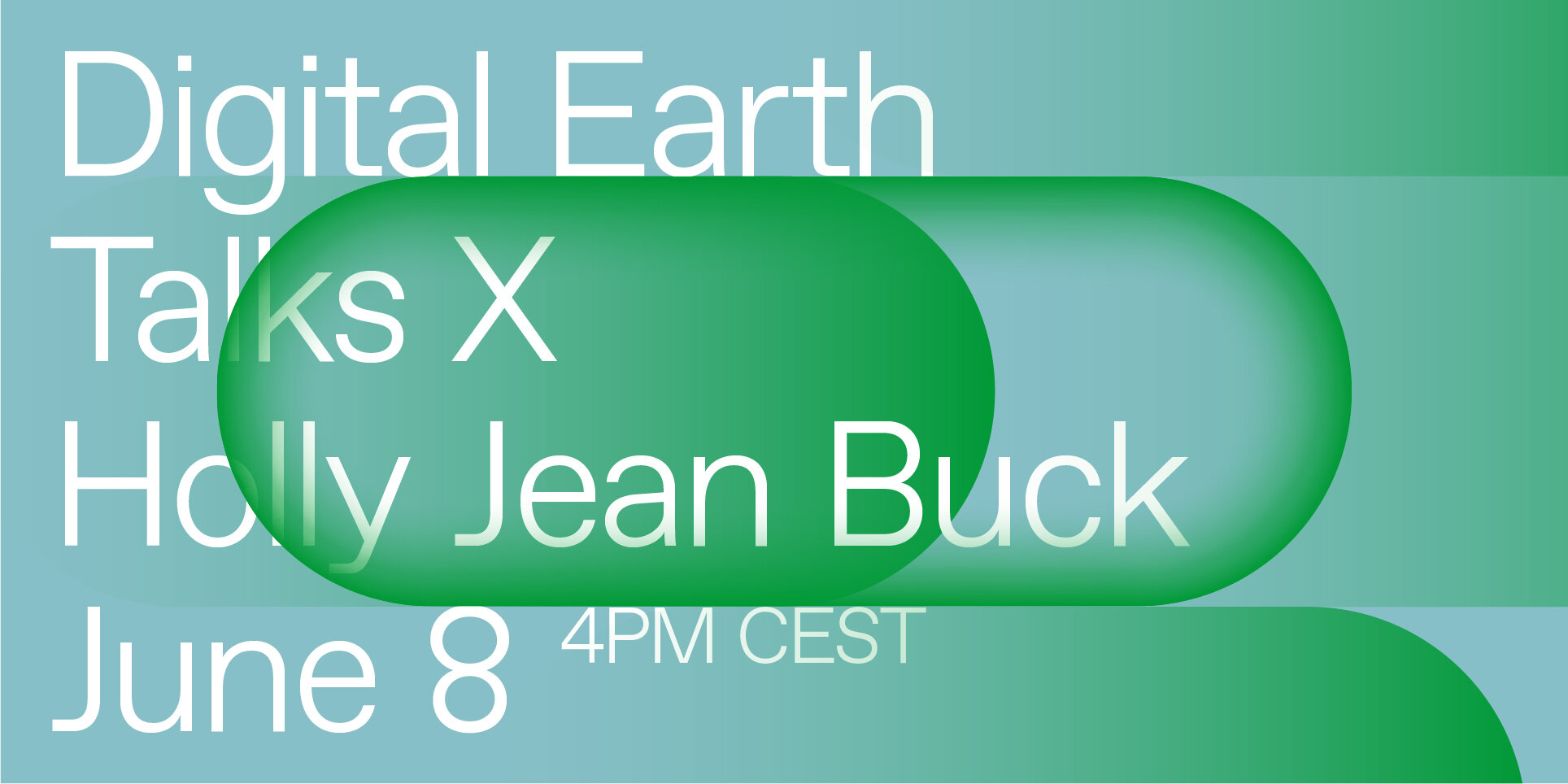Recap #4 Digital Earth Talks x Holly Jean Buck
written by Nora N. Khan and Digital Earth
In 2021, Nasdaq, the second biggest stock market exchange in the world, bought a majority stake in a carbon removal marketplace. This was a public bet that carbon removal technology might play a significant role in the future.
Carbon removal is an umbrella term for any technique which removes carbon from the atmosphere; some are ecological, and some involve industrial systems. It has become one of the most important tools in attempting to reverse and balance CO2 emissions and even compensate for other greenhouse gas emissions. Arguably, carbon removal will most probably become part of a global goal of reaching net-zero. It remains an elusive and catch-all term for reaching carbon neutrality.
Holly Jean Buck opts out of discussing how such techniques and technologies might work. Instead, she questions who measures net-zero and who governs the measurements of carbon emissions and removals. In her discussion with Digital Earth Fellows, Buck sketched the roadmap for an alternative information infrastructure which relies on public platforms monitoring carbon removal and emissions. Such platforms are owned by the public, and they thus actively take part in the decision-making processes around the regulations and implementations of carbon removal. Buck explained that removal is, without doubt, difficult to imagine in an age of social media, where it has become profitable to create ideological polarisation. This polarisation actively complicates the work that needs to be done collectively.
It is difficult to distribute limits for carbon emissions equally across all industries. It is equally difficult as the space is a political battleground: which industries get to retain residual emissions and which ones do not?
As Buck described in her comments, and active engagement with the Fellows, the real linchpin is the ownership of the information architecture of carbon emissions and removals, which is currently guarded by companies that are responsible for the vast majority of emissions. The numbers available are self-reported, and only a few technologies have been developed that could ensure independent research on and fact-checking of these numbers. This also means that a company could purchase another company which neutralises its own carbon emissions, and thus not inherently change anything in its structure.
Moreover, carbon removal is not particularly straightforward. There are certain emissions which prove extremely difficult to pull out of the atmosphere, such as emissions related to agriculture, transports and industrial processes. It is difficult to distribute limits for carbon emissions equally across all industries. It is equally difficult as the space is a political battleground: which industries get to retain residual emissions and which ones do not?
Together with the Fellows, Buck embarked on the difficult journey of imagining how such platforms might function, and the variety of issues in each geographic zone that such platforms had to thrive in despite. The Fellows discussed the issue of ‘the global’ first, highlighting the unequal distribution of resources, and thus, the incapacity of such platforms to respond to local issues. Further, they discussed the creation and imagination of new platforms and proposed a structure of governance. What infrastructures of governance should be dismantled in this process?
At end, Buck and the Fellows dove into a conversation around education and artistic practice, exploring precisely how artists and educators might take part in narrating modes of coming together across consensus models, to create communities which hold companies and violent capitalist systems accountable.
Recap Digital Earth Talks 2021
Final Reflection on the Digital Earth Talks Series
Recap Digital Earth Talks #1 Lukáš Likavčan
Recap Digital Earth Talks #2 Chakanetsa Mavhunga
Recap Digital Earth Talks #3 Maya Indira Ganesh
Recap Digital Earth Talks #4 Holly Jean Buck
Recap Digital Earth Talks #5 Svitlana Matviyenko
About Digital Earth Talks
How do we imagine a humane Digital Earth to come? Join the discussion and explore the visions of leading voices in art, tech, and philosophy from around the world.
Discover our past events here:




